The Best Food Markets in Tokyo, Japan
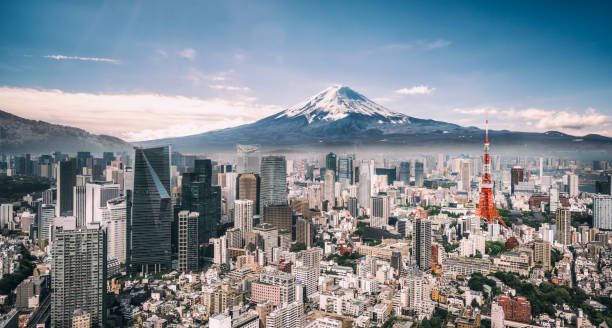
Tokyo, a city of contrasts and tradition is the capital of Japan, it is a bustling metropolis that blends tradition and modernity in a unique way.
From the vibrant street fashion to the ancient temples, Tokyo is a city of contrasts that has something to offer for every visitor.
The first thing that comes to mind when thinking of Tokyo is the sheer size of the city. With a population of over 13 million people, Tokyo is one of the largest cities in the world.
The city is a hub of business, culture, and entertainment and attracts visitors from all over the globe. Despite its massive size, Tokyo is incredibly well organized and efficient, with a world-renowned transportation system that makes it easy to navigate the city.
One of the most popular tourist destinations in Tokyo is the famous Shibuya Crossing. This bustling intersection is the busiest in the world, with an average of over 2,500 pedestrians crossing every time the lights change.
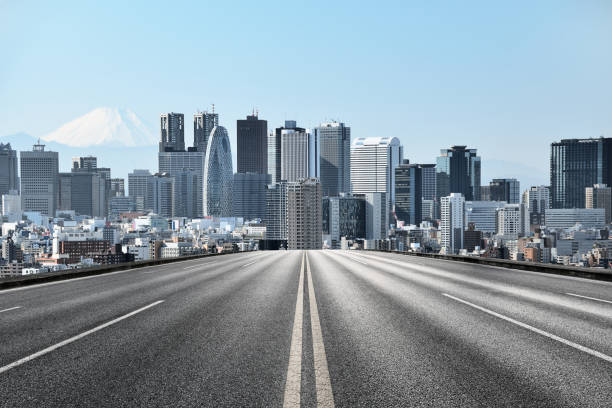
The best way to experience Shibuya Crossing is from one of the surrounding buildings, where you can see the sea of people moving in unison like a well-choreographed dance.
Another must-see attraction in Tokyo is the Imperial Palace, which sits in the heart of the city. This beautiful palace was once home to the emperor of Japan and is surrounded by a moat and massive stone walls.
The palace is only open to the public twice a year, but the gardens surrounding it are open year-round and offer a tranquil escape from the hustle and bustle of the city.
Despite its modernity, Tokyo is deeply rooted in tradition, and nowhere is that more evident than in the city's temples and shrines.
The most famous temple in Tokyo is the Sensoji Temple in the Asakusa district. This ancient temple dates back to the 7th century and is dedicated to the Buddhist goddess of mercy, Kannon.
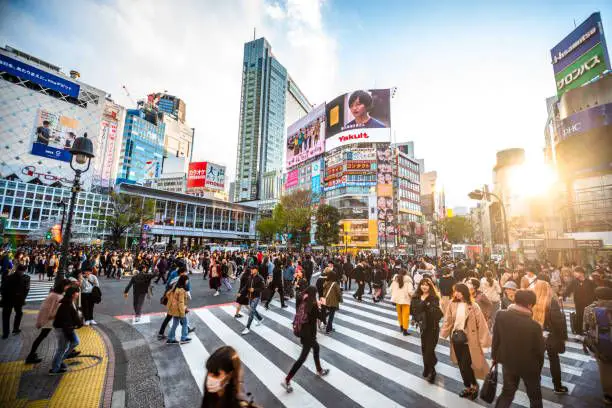
Visitors can explore the temple grounds and enjoy traditional Japanese souvenirs and street food in the surrounding market.
Another popular temple in Tokyo is the Meiji Shrine in Shibuya. This shrine is dedicated to Emperor Meiji, who ruled Japan from 1868 until his death in 1912. The shrine is surrounded by a peaceful forest, which is a welcome respite from the busy city streets.
Finally, no trip to Tokyo is complete without experiencing the city's famous street food. From sushi to ramen to yakitori, Tokyo has a rich culinary culture that is not to be missed.
The best place to experience Tokyo's street food is in the narrow alleys of the city's many food markets, such as Tsukiji Fish Market or the Ameya Yokocho Market.
Tokyo is a city of contrasts that blends tradition and modernity in a way that is uniquely Japanese. From the busy streets of Shibuya to the peaceful gardens of the Imperial Palace, Tokyo has something for everyone.
Whether you are a first-time visitor or a seasoned traveler, Tokyo is a city that will leave you wanting more.
Exploring Tokyo's Best Food Markets

Tokyo, the capital of Japan, is a food lover's paradise with a diverse range of food markets that offer a unique and exciting culinary experience.
From the world-famous Tsukiji Fish Market to the traditional street food stalls, Tokyo's food markets are a must-visit for any foodie. In this article, we will explore the best food markets in Tokyo and what makes each one special.
1. Tsukiji Fish Market
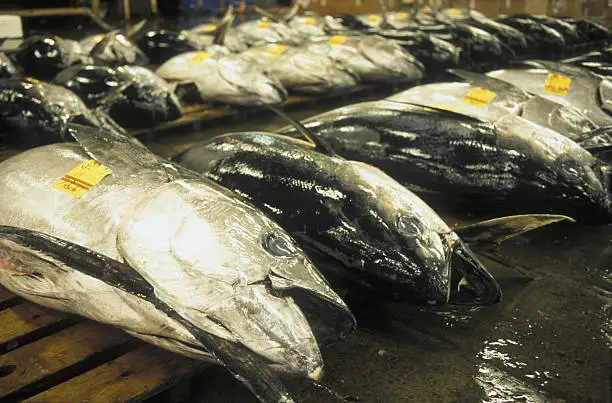
Tsukiji Fish Market is a must-visit destination for seafood lovers, located in the heart of Tokyo, Tsukiji Fish Market is one of the world's largest and most famous fish markets.
The market's history dates back to the 16th century when the Tokugawa shogunate established it as a central fish market for Edo (now Tokyo).
Today, Tsukiji Fish Market is a popular destination for tourists and locals alike, offering an impressive variety of seafood that has made it an icon of the city's culinary scene.
What to Expect at Tsukiji Fish Market
The market is divided into two main areas: the inner market and the outer market. The inner market is the main wholesale section, where the tuna auctions take place in the early hours of the morning.
Visitors can watch the auctions from a designated viewing area, but are not allowed to participate in them.
The outer market is where visitors can sample a wide range of fresh seafood, as well as other food items such as sushi, rice bowls, and omelettes.
The market is bustling with vendors, and the sights and smells of the fresh seafood can be overwhelming at times.
One of the most popular activities at the market is to have a sushi breakfast at one of the many sushi restaurants located in the outer market.
The sushi is made with some of the freshest seafood in the world, often caught just hours before it is served. The restaurants can be quite busy, so it is recommended to arrive early to avoid long wait times.
What to Eat at Tsukiji Fish Market
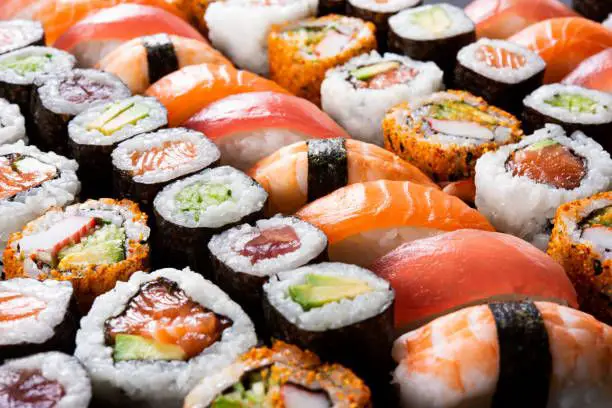
Tsukiji Fish Market offers an incredible variety of seafood, including tuna, salmon, octopus, eel, and many more. Some of the most popular dishes to try at the market include:
- Sushi: Made with fresh fish that is often caught the same day, Tsukiji Fish Market's sushi is a must-try dish for seafood lovers. Some of the most popular sushi restaurants at the market include Sushi Dai and Daiwa Sushi.
- Uni (sea urchin): Tsukiji Fish Market is known for its high-quality uni, which is often served fresh on a bed of rice.
- Tuna: The market's tuna auctions are world-famous, and visitors can sample some of the freshest and most delicious tuna at the market's many sushi restaurants.
- Grilled seafood: Many of the stalls at the market offer grilled seafood such as scallops, squid, and shrimp. These dishes are often served on skewers and make for a great snack while exploring the market.
Tips for Visiting Tsukiji Fish Market
- Arrive early: The market is busiest in the early morning when the tuna auctions are taking place. Arriving early will give you the best chance to explore the market before it gets too crowded.
- Dress appropriately: The market can be quite wet and slippery, so it is recommended to wear shoes with good traction and clothing that you don't mind getting dirty.
- Follow the rules: There are certain areas of the market where photography is not allowed, and visitors must follow the rules set by the market's staff.
Tsukiji Fish Market is a must-visit destination for anyone who loves seafood. The market's incredible variety of fresh seafood and bustling atmosphere make for a
unique and unforgettable experience. Whether you are a sushi lover or just looking for a fun and exciting culinary adventure in Tokyo, Tsukiji Fish Market is not to be missed.
The Tsukiji Fish Market in Tokyo, Japan was relocated to Toyosu Market in October 2018.
New address: Toyosu Market, 6 Chome-6-1 Toyosu, Koto City, Tokyo 135-0061, Japan
2. Ameya Yokocho
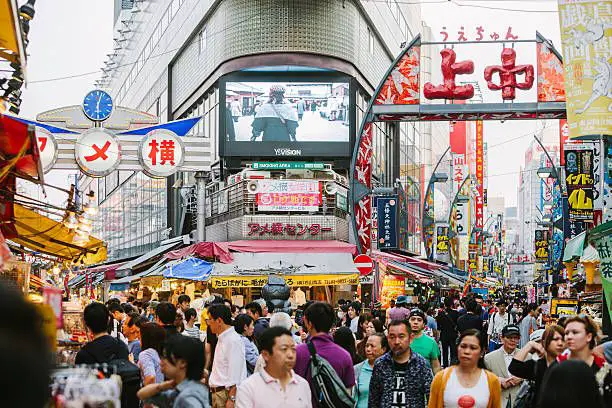
Ameya Yokocho: Exploring Tokyo's Vibrant "Candy Alley" Market
Ameya Yokocho, also known as "Candy Alley," is a vibrant and bustling market located in the heart of Tokyo.
The market's history dates back to the post-World War II era, when it was known for selling black market candy and other goods.
Today, Ameya Yokocho is a popular destination for tourists and locals alike, offering a wide range of products at affordable prices.
What to Expect at Ameya Yokocho
Ameya Yokocho is a covered outdoor market that stretches for several blocks. The market is lined with small shops and stalls, selling everything from fresh produce and seafood to clothing, electronics, and souvenirs.
The atmosphere is lively and bustling, with vendors calling out to potential customers and bargaining over prices.
The market's name, "Candy Alley," comes from its history of selling black market candy after World War II.
While candy is no longer the main focus of the market, there are still plenty of sweet treats to be found, including traditional Japanese sweets and imported candies from around the world.
What to Buy at Ameya Yokocho
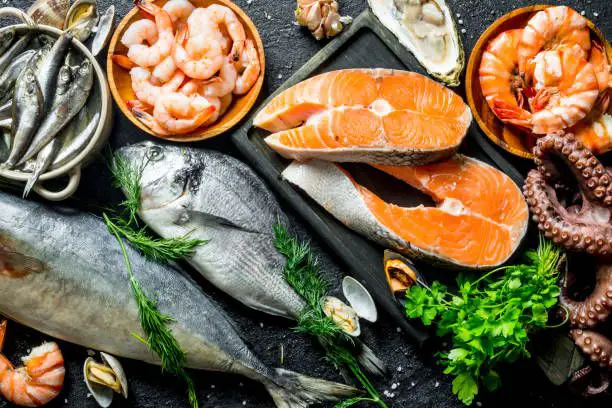
Ameya Yokocho offers a wide range of products at affordable prices, making it a great place to shop for souvenirs and gifts. Some popular items to look out for include:
- Fresh seafood: Ameya Yokocho is located near the Ueno Park and the Ueno Zoo, so the market is a great place to find fresh seafood. Some vendors even offer live seafood, such as crabs and lobsters, which can be cooked on the spot.
- Clothing and accessories: The market offers a variety of clothing and accessories at affordable prices, including vintage and second-hand items.
- Electronics: Ameya Yokocho is also a great place to shop for electronics, with vendors selling everything from cameras and laptops to mobile phones and gaming consoles.
- Japanese souvenirs: The market offers a variety of traditional Japanese souvenirs, including yukatas (summer kimonos), chopsticks, and tea sets.
Tips for Visiting Ameya Yokocho
- Bargain: The market is known for its bargaining culture, so don't be afraid to negotiate with vendors over prices.
- Try the street food: Ameya Yokocho is a great place to sample Japanese street food, including takoyaki (octopus balls), yakitori (grilled chicken skewers), and taiyaki (fish-shaped cakes filled with sweet bean paste).
- Visit during the week: The market can be quite crowded on weekends and holidays, so visiting during the week is recommended if possible.
Ameya Yokocho is a vibrant and exciting market that offers a unique shopping experience in Tokyo.
With its affordable prices, wide range of products, and bustling atmosphere, it is a must-visit destination for anyone looking to explore Tokyo's vibrant street culture.
Whether you are looking to shop for souvenirs, sample Japanese street food, or just soak up the atmosphere, Ameya Yokocho is not to be missed.
Ameya Yokocho is located in the Ueno district of Tokyo and can be accessed from either Ueno or Okachimachi station.
Address: 4-7-8 Ueno, Taito-ku, Tokyo 110-0005, Japan
3. Toyosu Market
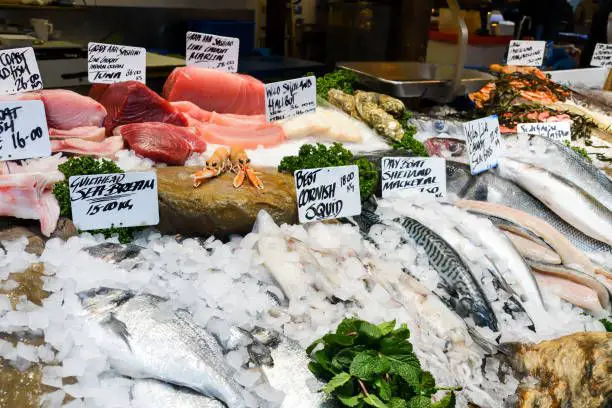
Exploring Toyosu Market: Tokyo's High-Tech Fish and Produce Market
Toyosu Market is the new home of Tokyo's famous fish market, which was relocated from the historic Tsukiji Market in 2018.
The market is located in the Toyosu area of Tokyo, and features state-of-the-art facilities and technology to ensure the freshness and quality of the seafood and produce sold there. Here's what you need to know before visiting Toyosu Market.
What to Expect at Toyosu Market
Toyosu Market is divided into three sections: the wholesale market, the intermediate wholesale market, and the fruit and vegetable market.
The wholesale market is where the famous tuna auctions take place, and where vendors purchase large quantities of seafood for distribution to restaurants and retailers.
The intermediate wholesale market is where vendors purchase smaller quantities of seafood for direct sale to consumers, while the fruit and vegetable market offers a wide range of fresh produce.
One of the standout features of Toyosu Market is its use of high-tech facilities to ensure the freshness and safety of the seafood sold there.
The market uses a computerized tracking system to monitor the temperature and location of each shipment of seafood, and features a special air conditioning system that can be adjusted to maintain the ideal temperature and humidity for each type of seafood.
What to Buy at Toyosu Market
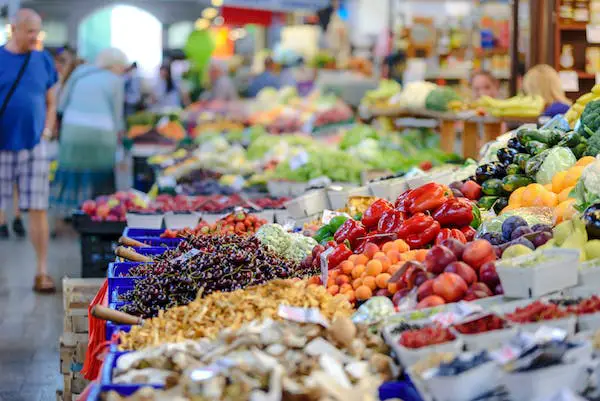
Toyosu Market is known for its fresh and high-quality seafood, but it also offers a wide range of other products. Some popular items to look out for include:
- Fresh seafood: The market offers a wide variety of seafood, including tuna, salmon, squid, and octopus. Some vendors also offer prepared seafood dishes like sushi and sashimi.
- Fruits and vegetables: The fruit and vegetable market offers a wide range of fresh produce, including local and imported varieties.
- Specialty products: The market also offers a range of specialty products like wasabi, seaweed, and pickled vegetables.
Tips for Visiting Toyosu Market
- Plan your visit in advance: The market can be quite busy, so it's a good idea to plan your visit in advance and arrive early in the morning to avoid the crowds.
- Wear appropriate footwear: The market can be wet and slippery, so be sure to wear shoes with good traction.
- Don't touch the seafood: To ensure the freshness and quality of the seafood, visitors are not allowed to touch the products. Instead, vendors will assist you with your purchases.
- Bring cash: While some vendors accept credit cards, many only accept cash, so be sure to bring enough yen for your purchases.
Toyosu Market is a must-visit destination for anyone interested in experiencing Tokyo's vibrant food culture.
With its high-tech facilities, fresh and high-quality seafood, and wide range of other products, the market offers a unique and unforgettable shopping experience.
Whether you are a foodie or just looking to explore Tokyo's local markets, Toyosu Market is not to be missed.
Address: 6 Chome-6-1 Toyosu, Koto City, Tokyo 135-0061, Japan.
4. Kappabashi Dougu Street
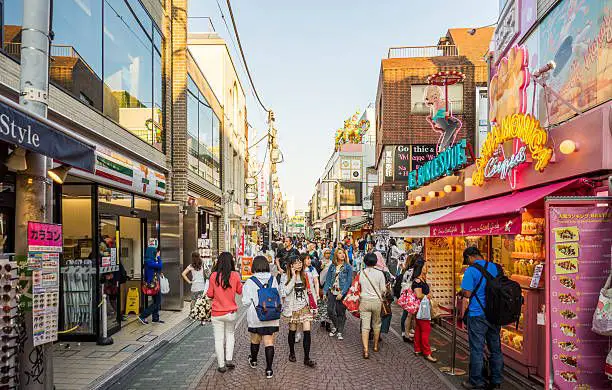
Kappabashi Dougu Street: A Foodie's Paradise in Tokyo
Kappabashi Dougu Street is a famous shopping street located in the Asakusa district of Tokyo.
The street is known for its wide range of shops selling kitchenware, restaurant supplies, and food samples. Here's everything you need to know about exploring Kappabashi Dougu Street.
What to Expect at Kappabashi Dougu Street
Kappabashi Dougu Street is a lively and bustling street lined with shops selling all kinds of kitchenware, from knives and cookware to chopsticks and plates.
The street is also home to many shops selling restaurant supplies, such as menu holders and dishes, as well as plastic food samples used for display in restaurant windows.
One of the highlights of Kappabashi Dougu Street is the variety of food-related goods available. Visitors can find everything from specialty Japanese knives to intricate bento boxes and decorative wagashi (traditional Japanese sweets).
Food samples are also a popular item, with shops offering incredibly realistic-looking plastic food replicas that are almost indistinguishable from the real thing.
What to Buy at Kappabashi Dougu Street
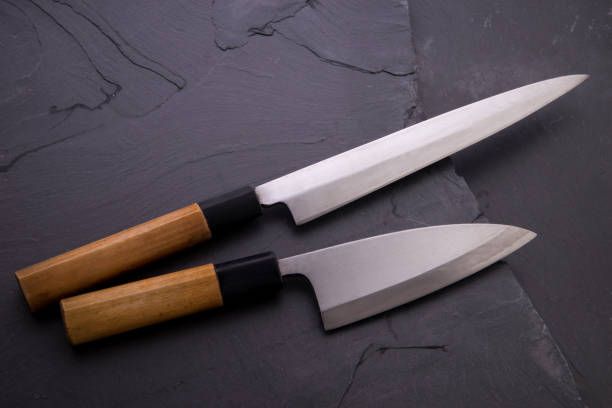
Some of the most popular items to look out for on Kappabashi Dougu Street include:
- Japanese knives: Kappabashi Dougu Street is famous for its selection of high-quality Japanese knives, which are prized by chefs around the world for their sharpness and durability.
- Bento boxes: These decorative lunch boxes are a popular item for both locals and tourists, with many shops offering a wide variety of designs and sizes.
- Chopsticks: Kappabashi Dougu Street has a wide range of chopsticks, from simple wooden ones to intricately designed lacquered ones.
- Plastic food samples: These incredibly realistic plastic food replicas are a unique souvenir and make for great conversation pieces.
Tips for Visiting Kappabashi Dougu Street
- Bring cash: Many of the shops on Kappabashi Dougu Street only accept cash, so be sure to bring enough yen for your purchases.
- Take your time: With so many shops to explore, it's a good idea to give yourself plenty of time to wander and browse.
- Watch out for imitations: Some shops may sell lower-quality or fake items, so be sure to do your research and shop at reputable stores.
- Don't be afraid to haggle: While haggling is not common in Japan, some shops on Kappabashi Dougu Street may be willing to negotiate on prices, particularly if you are buying multiple items.
Kappabashi Dougu Street is a must-visit destination for anyone interested in cooking, food, or Japanese culture.
With its wide range of kitchenware and food-related goods, the street offers a unique and unforgettable shopping experience.
Whether you are a professional chef or a home cook, Kappabashi Dougu Street has something for everyone.
Address: 3 Chome-18-2 Matsugaya, Taito City, Tokyo 111-0036, Japan.
5. Nakamise Shopping Street
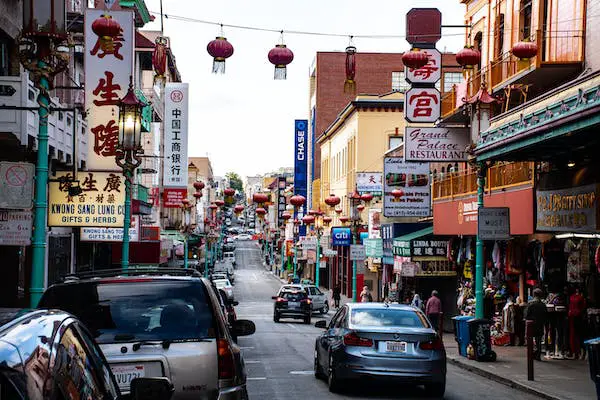
Nakamise Shopping Street: A Colorful and Vibrant Shopping Destination in Tokyo
Nakamise Shopping Street is a lively and bustling shopping street located in the heart of the Asakusa district in Tokyo.
The street is famous for its vibrant and colorful atmosphere, as well as its wide range of shops selling traditional Japanese goods and souvenirs. Here's everything you need to know about exploring Nakamise Shopping Street.
What to Expect at Nakamise Shopping Street
Nakamise Shopping Street is a pedestrian-only street that runs from the Kaminarimon gate to the Hozomon gate of the Sensoji Temple.
The street is lined with around 90 shops selling all kinds of traditional Japanese goods and souvenirs, including snacks, toys, clothing, and accessories. Some of the most popular items to look out for include:
- Edo-style sweets: These traditional Japanese sweets are a popular souvenir, with many shops offering a wide variety of flavors and styles.
- Furoshiki: These colorful cloths are a traditional Japanese wrapping cloth used to wrap gifts and goods.
- Sensu (folding fans): These beautiful and intricately designed fans are a popular item for both locals and tourists.
- Maneki Neko (lucky cat): These cute and iconic cat figurines are believed to bring good luck and are a popular souvenir item.
What to Buy at Nakamise Shopping Street
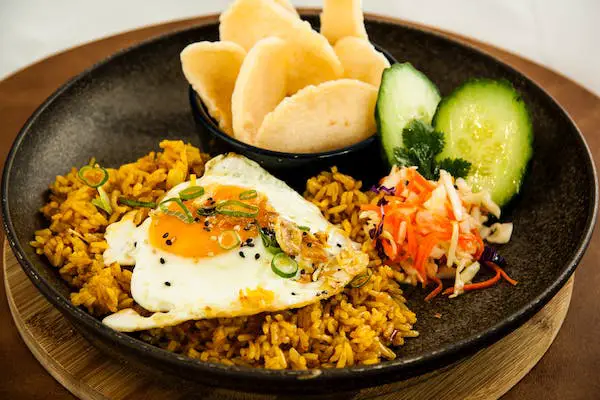
With so many shops to explore, it can be overwhelming to know where to start. Here are some tips on what to buy at Nakamise Shopping Street:
- Senbei (rice crackers): These traditional Japanese snacks are a must-try, with many shops offering a wide variety of flavors and styles.
- Japanese toys: From kendama (traditional Japanese toys) to yoyo, Nakamise Shopping Street has a wide range of toys and games to choose from.
- Japanese clothing: Many shops on the street sell traditional Japanese clothing, such as yukata (summer kimono) and happi coats (short cotton jackets).
Tips for Visiting Nakamise Shopping Street
- Go early: The street can get crowded, especially during peak tourist season, so it's best to visit early in the day.
- Try the samples: Many shops offer free samples of their products, so don't be afraid to try a few things before making a purchase.
- Bargain: Some shops may be willing to negotiate on prices, particularly if you are buying multiple items.
- Respect the culture: Nakamise Shopping Street is located in a religious area, so it's important to dress appropriately and be respectful of the customs and traditions.
Nakamise Shopping Street is a must-visit destination for anyone interested in traditional Japanese culture and souvenirs.
With its wide range of shops and colorful atmosphere, the street offers a unique and unforgettable shopping experience.
Whether you are looking for souvenirs or just want to soak up the atmosphere, Nakamise Shopping Street is well worth a visit.
Address: 1-chome-36-2 Asakusa, Taito City, Tokyo 111-0032, Japan.
Tips for Visiting Tokyo's Food Markets
If you are planning a visit to Tokyo's food markets, here are a few tips to help you make the most of your experience:
- Arrive early: Many of the markets open early in the morning, and the best food is often sold out by mid-morning. Arriving early will give you the best chance of sampling the freshest food.
- Wear comfortable shoes: The markets are large, and you will be doing a lot of walking. Make sure to wear comfortable shoes and dress appropriately for the weather.
- Try new foods: Tokyo's food markets offer a wide range of unique and delicious foods that you may not have tried before. Be adventurous and try something new!
Tokyo's food markets offer a unique and exciting culinary experience that should not be missed. From the world-famous Tsukiji Fish Market to the traditional street markets, Tokyo's food markets offer something for everyone.
Whether you are a foodie or just looking for a fun and memorable experience in Tokyo, a visit to one of the city's food markets is a must.
